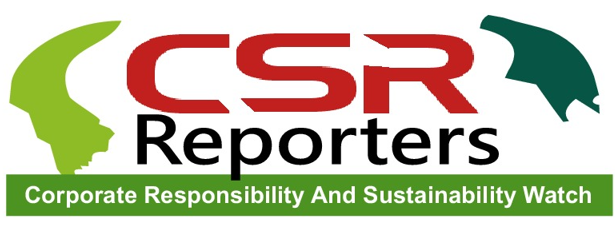
5 Key Facets of a Strong Sustainability Strategy
Mike Hower
Sustainability strategy can be complicated. Here are five key elements to creating a successful one.
Strategy is a term thrown around without much thought or rigor. And this sometimes seems doubly true in the world of corporate sustainability. As more companies embark on their sustainability journey, everybody seems to be talking about the importance of creating a sustainability and ESG strategy — yet what this means exactly remains nebulous.
At its core, strategy is about choices. In a world of limited time and resources, it’s about deciding what to do and what not to do because you have a clear vision of what you want to achieve.
To create some clarity on this important topic, I gathered several sustainability and ESG leaders from across industries for a panel at GreenBiz 23 called “The Non-Negotiables: 5 Key Facets of a Strong ESG and Sustainability Strategy.” The session included Gail Grimmett, senior vice president of sustainability and corporate iInnovation at Delta Air Lines; Annabelle Stamm, director of sustainability strategy at Edison Energy; Blake McGowan, solutions executive at VelocityEHS; and Nancy Mahon, senior vice president of global corporate citizenship and sustainability at The Esteé Lauder Companies.
The breakout room was packed (standing room only, like many of the GreenBiz 23 sessions), with hundreds of attendees curious to learn more from and help contribute to our conversation. After much debate and discussion, the panelists and I — with heavy input from the audience — discussed five key facets of a strong sustainability strategy. Here they are:
1. Be agile, and integrate sustainability into your corporate strategy
The best sustainability strategy is a business strategy that advances sustainability. That’s to say, in a perfect world, a company’s business strategy is focused on creating long-term social, environmental and financial value — making a separate sustainability strategy redundant.
“We always say that we’re trying to work ourselves out of a job,” Mahon said. “But I don’t think we’ll ultimately be able to do that.”
At The Esteé Lauder Companies, the organization integrates sustainability into its business strategy by assigning senior executives to committees covering the environmental, social and governance pillars. The head of supply chain is involved with environment, human resources with social and the CFO with governance. While the committees are led by people at the highest levels, they are made up of practitioners.
Delta also used a committee system to better align its sustainability strategy with business strategy, Grimmett said. “We’re all in this together, and in a role that requires some sort of disruptive thinking.”
While a company might have a solid sustainability strategy, the world is changing so fast that flexibility must be baked in. All of the panelists agreed that agility and adaptation is critical to sustainability strategy success.
2. Set targets, and know how you’ll measure progress
The next non-negotiable practice is establishing clear targets and a plan for getting there. While setting targets is easy, establishing the right ones isn’t always so simple.
Setting fuel efficiency targets, for example, can be tricky, according to Grimmett, because the airline can’t always directly control every factor impacting fuel efficiency. That’s why Delta has several different councils that encourage integration of all the players responsible for improving fuel efficiency. This could include everyone from airport operations control, which might cause an airplane to burn more fuel when requesting it fly a holding pattern, to technical operations teams that might make technical adjustments to planes to improve efficiency,
“In some ways, we have control over nothing and influence over everything,” said Grimmett.
While many companies set 2030 or 2050 targets, they must also remain focused on the immediate needs of running a business. Setting shorter-term milestones can help companies stay on track and also encourage disruptive technology, Grimmett said. Often, the technology doesn’t yet exist for companies to meet their ambitious sustainability targets, and creating milestones can help unlock entrepreneurial innovation to meet the moment, Grimmett said.
3. Data quality over quantity
We live in an era where sustainability data is plentiful, but its quality is questionable. Rather than focusing on collecting as much information as possible, sustainability teams should focus on finding the right data, the panelists said.
“Good data is fundamental to a successful sustainability strategy,” Stamm said. “Data that drives decarbonization is key.”
We don’t have decades to collect and analyze data, the panelists agreed. We need metrics that can be acted on immediately, so we can implement measures that drive decarbonization and advance sustainability goals.
4. Bring your stakeholders along for the ride
Sustainability teams tend to be small with limited immediate spheres of influence — to be successful, they must rely on stakeholders throughout the organization. One of the best ways to do this is by engaging these folks during strategy creation.
With the language of sustainability being wonky, sustainability leads need to translate things into a language that people understand and link it to a strong value proposition, Stamm said. It’s also important to take cultural differences into account. When it comes to sustainability action, the United States is very carrot-driven while Europe tends to be more about the stick, she added.
“The key is to identify those key people who are going to be the influencers … and who is going to be your biggest champion,” McGowan said. These internal champions will help ensure that your sustainability strategy is effectively implemented, he said.
Another key point is that often when an internal stakeholder says “no” to something, it really means they need more information, McGowan added.
5. Ensure philosophical consistency throughout the organization
Toward the end of the panel, a member of the audience suggested a fifth non-negotiable: achieving a philosophical consensus throughout your organization: To be successful, the same sustainability ethos must be maintained across departments and teams.
If, for example, a company has a strong corporate sustainability strategy yet has a government relations strategy that doesn’t match, this weakens the organization’s overall effectiveness for achieving its sustainability ambitions.
At these words, the audience erupted into applause and the panelists nodded in agreement.









